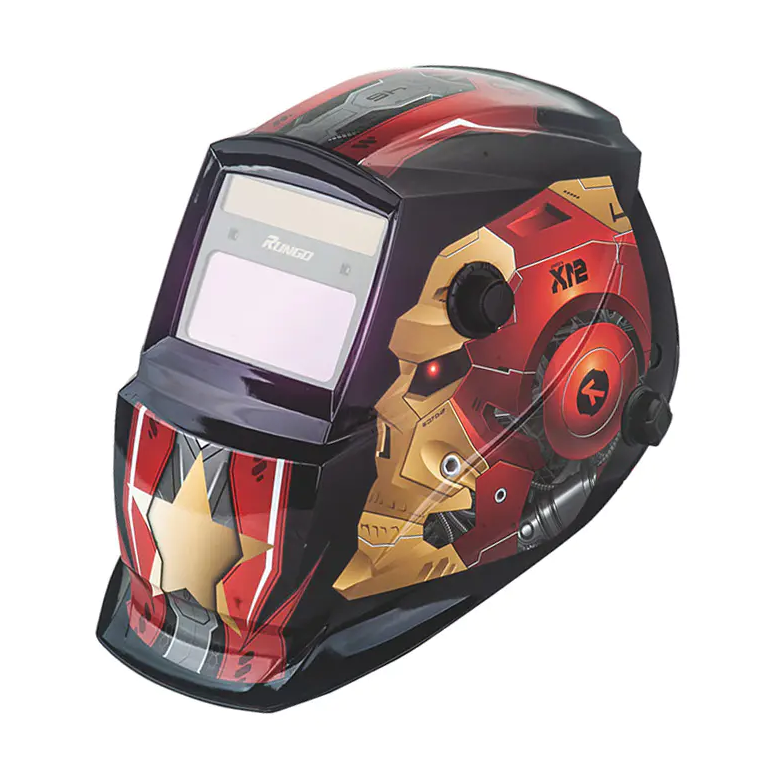Exploring the Various Types of Welding Applications Suitable for Auto Lens Welding Helmets

Auto lens welding helmets have become essential equipment for welders seeking both protection and convenience. Equipped with advanced sensors and auto-darkening filters, these helmets automatically adjust their shade to shield the welder’s eyes from harmful light and radiation. However, welders often ask: Which types of welding processes are best suited for using an auto lens welding helmet? Understanding the compatibility of these helmets with various welding methods can help users choose the right gear for their specific needs.
Auto lens welding helmets are highly versatile and designed to work with a wide range of welding processes. One of the most common applications is Shielded Metal Arc Welding (SMAW), also known as stick welding. This method generates intense arcs that produce bright flashes and harmful ultraviolet (UV) and infrared (IR) radiation. Auto lens helmets respond quickly to these light changes, ensuring that the welder’s eyes are protected immediately, making them an ideal choice for stick welding.
Metal Inert Gas (MIG) welding is another popular process where auto lens helmets excel. MIG welding produces a consistent and bright arc that can be damaging to the eyes. The automatic darkening feature of the helmet allows welders to monitor their work before striking the arc and then seamlessly switch to a protective shade when welding begins. This improves safety and efficiency during MIG welding projects.
Tungsten Inert Gas (TIG) welding is often considered a more delicate process requiring precise control and visibility. Auto lens welding helmets are particularly suitable for TIG welding because they offer adjustable shade settings, allowing welders to select lighter or darker tints depending on the intensity of the arc. This flexibility ensures better visibility for starting the arc and performing detailed welds while still providing full eye protection.
Beyond these common types, auto lens helmets can also be used for Flux-Cored Arc Welding (FCAW) and Plasma Arc Welding. Both methods produce intense light and UV/IR radiation similar to MIG and TIG welding. The helmet’s rapid response to arc initiation and its ability to filter harmful rays make it well-suited for these applications as well.
Some auto lens welding helmets are even rated for use in cutting processes such as oxy-fuel cutting or plasma cutting. Although these processes differ from welding, they also emit bright sparks and harmful radiation, which the helmets can effectively filter. This broadens the usefulness of the helmet across metal fabrication and repair tasks.
It’s important to note that while auto lens helmets are generally compatible with multiple welding types, selecting the correct helmet with the appropriate shade range and sensitivity adjustments is critical. Welders should consult the helmet’s specifications and recommended applications to ensure it meets their specific welding needs.
In conclusion, auto lens welding helmets are highly adaptable and suitable for a wide variety of welding methods, including stick, MIG, TIG, flux-cored, and plasma welding. Their automatic darkening technology provides reliable eye protection across these processes while enhancing comfort and productivity. For welders engaged in diverse welding tasks, investing in a quality auto lens welding helmet offers both safety and versatility.
Product Features
1. Dual Sensor System
2. Large Viewing Area
3. Solar Panel for Power Efficiency
4. Low Battery and Power Indicators
5. Test Button for Self-Check
6. Adjustable Sensitivity and Delay Time
7. UV/IR Protection
8. Industry Standards Compliance
9. Comfortable Wear
- Art
- Causes
- Crafts
- Dance
- Drinks
- Film
- Fitness
- Food
- Giochi
- Gardening
- Health
- Home
- Literature
- Music
- Networking
- Altre informazioni
- Party
- Religion
- Shopping
- Sports
- Theater
- Wellness


